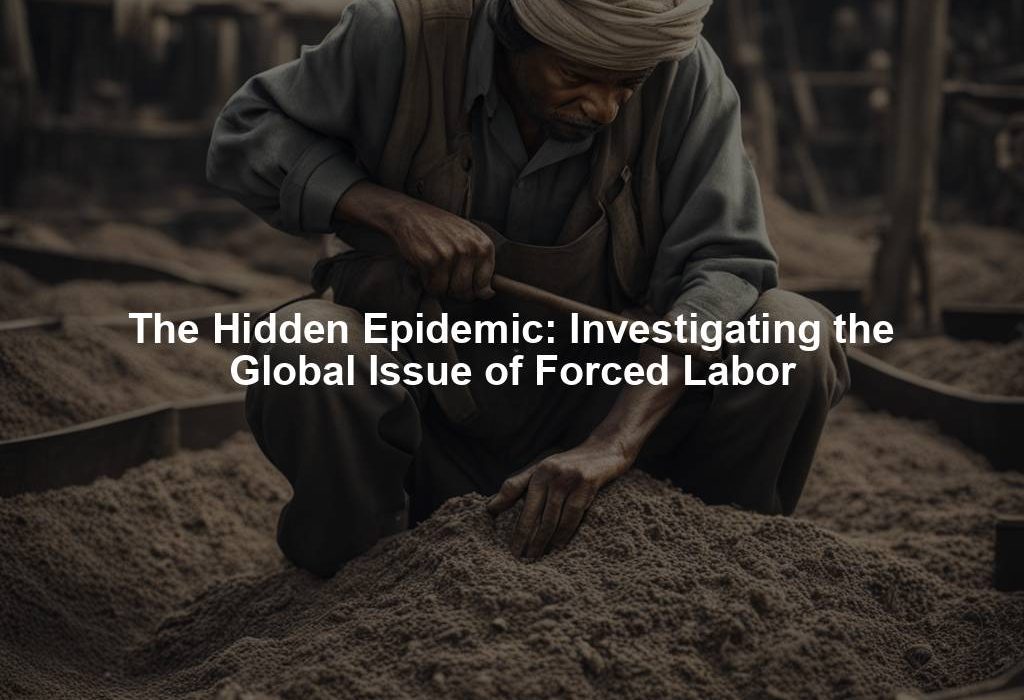Crimes of Coercion: Unveiling the Human Tragedy of Forced Labor
Forced labor is not merely an abstract concept but a harsh reality that shatters the lives of millions worldwide. It embodies modern-day slavery, where individuals are stripped of their freedom and forced into labor under brutal, exploitative conditions. Despite global efforts to combat this scourge, forced labor’s insidious grip persists, leaving a trail of shattered lives in its wake.
Defining the Unthinkable: The Unyielding Grasp of Forced Labor
The International Labour Organization (ILO) defines forced labor as work extracted through coercion, whether physical, psychological, or economic, with dire consequences for non-compliance. From debt bondage to sexual exploitation and ensnarement in supply chains, the forms of this atrocity are manifold, depriving individuals of agency and liberty.
According to the harrowing statistics of the Global Slavery Index, a staggering 40.3 million souls are ensnared in modern-day slavery, with a crushing 24.9 million entrapped in forced labor worldwide. This epidemic transcends borders, afflicting both affluent and developing nations, with industries like agriculture, construction, manufacturing, and domestic labor acting as breeding grounds for exploitation.
Unraveling the Threads of Injustice: Root Causes and Pernicious Facilitators
The roots of forced labor delve deep into the soil of economic, social, and political disparity. Where poverty and limited opportunities flourish, individuals become vulnerable, accepting any labor, regardless of the chains it brings. Discrimination, social inequity, and the absence of safeguards further fuel this malignant cycle.
In the contemporary web of globalization, supply chains stretch across continents, offering fertile ground for forced labor to flourish. Companies sourcing goods from regions with lax labor protections inadvertently perpetuate exploitation. Navigating these convoluted supply chains proves daunting, obscuring the taint of forced labor in the products we consume.
Echoes of Suffering: The Human Toll of Forced Labor
Behind the cold statistics lie the stories of individuals subjected to unimaginable anguish. Victims of forced labor endure physical and mental torment, robbed of autonomy and dignity. Exposed to perilous work conditions sans safety measures, injuries and illnesses haunt their days. The scars of this exploitation leave lasting imprints on survivors’ well-being.
Communities ravaged by forced labor witness the disintegration of social fabric and economic resilience. Trust withers as neighbors turn into competitors in the struggle for meager resources. Economic exploitation stunts community growth, diverting vital resources from education, healthcare, and infrastructure towards sustaining illicit labor practices.
A Call to Arms: Endeavors to Combat the Shadows of Exploitation
Governments, international bodies, and advocates unite in the battle against forced labor. The ILO’s conventions seek to eradicate all forms of forced labor, while nations worldwide enact laws and policies to combat exploitation and punish perpetrators. Corporations tread the path of accountability, auditing supply chains, enforcing labor standards, and championing transparency initiatives visible to consumers.
Noble Aspirations, Formidable Challenges: Navigating the Hurdles Ahead
Despite concerted efforts, forced labor looms as a resilient adversary, shrouded in shadow. Central to this battle is the scarcity of accurate data to gauge the epidemic’s true scale, with many instances concealed from scrutiny. Coordination among stakeholders emerges as another obstacle, demanding a unified front from governments, businesses, and civil society. Collaboration emerges as the cornerstone for a formidable response against this insidious crime.
A Future United: Forging a World Free from Shackles of Exploitation
As we march forward, solidarity and collaboration stand as linchpins in the struggle against forced labor. Sharing knowledge, pooling resources, and amplifying advocacy efforts must characterize our path ahead. By fostering awareness and implementing best practices, we can aspire to a world where freedom reigns, and dignity is an inalienable right.
Let us unite in our resolve to confront forced labor, not as a distant woe but as a shared responsibility to uphold human rights and dignity.




